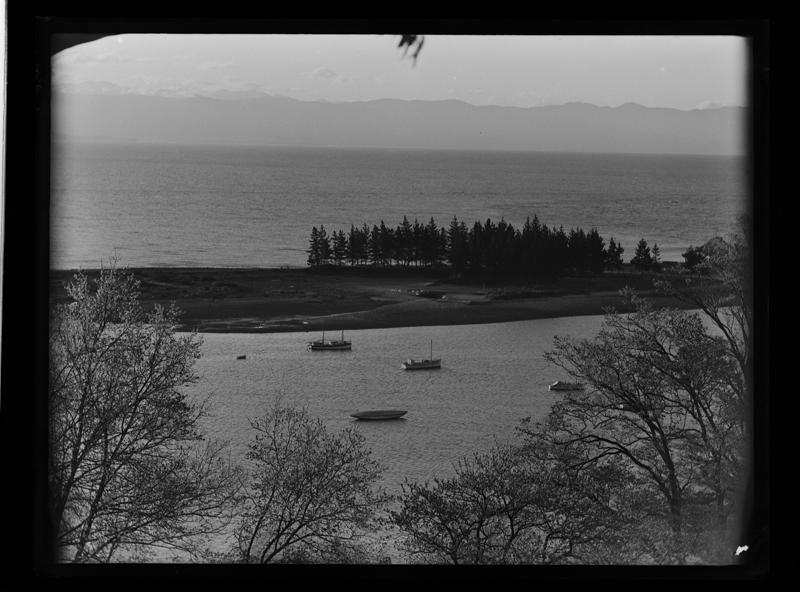History: Fifeshire Island, Nelson’s natural resource

Elevated view of Fifeshire Island. Photo: Nelson Provincial Museum, Ellis Dudgeon Collection.
BY ROBYN PARKES
Haulashore Island has been a place of enjoyment for many generations.
The island’s official name was ‘Fifeshire Island’ given in March 1842, and named after the earliest immigrant ship to Nelson. The name, Haulashore, came from it being used to haul (haul ashore) vessels onto its beach to be examined and repaired.
The ship ‘Fifeshire’, on setting sail on the 27th of February 1842, struck rocks on Arrow Rock. Her back was broken and she was condemned and advertised for salvage. The hull of the ship, water butts, chains, various fittings and stores were auctioned on Fifeshire Island in April 1842. Auctions of various other items were frequent, including cattle and other stock which were landed directly on the island.
By 1843, with a natural slip for vessels, the island was used to examine and repair crafts. It was stated that, “A place better adapted for this purpose nowhere exists.”
In 1846 a coal supply depot for steamers was put on the island with a stock of 500 tons of coal. A platform on both sides of the island was built to facilitate the loading and unloading of the coal. The war vessel, HMS ‘Racehorse’ from Wellington, arrived in December 1847 for a clean and refit. The guns and stores were landed on the island and a day later the ship was laid onshore to have her bottom cleaned.
The town was very proud of its natural slip and soon numerous vessels were arrivng to make use of it. The Ralph Bernal, on its voyage from Sydney in October 1848, was found to be leaking. Once in Nelson the problem was found under the bow. Within hours the ship was hauled onto Fifeshire, fixed and back in the water on the evenings tide.
The uniqueness of the slip was again promoted as it was not known of any other port in New Zealand where the same facilities existed for repairing vessels, the rise and fall of the tide being from 12 to 17 feet, the water smooth and deep, close to the shore and a bank with a soft bottom.
In 1864, a slip constructed at Wellington for the cleaning and repairing of New Zealand Steam Navigation Company’s vessels was found to be inadequate. The company resolved to make use of the superior advantages which Nelson’s harbour offered for this purpose, and negotiated with the Nelson Superintendent to lease a portion of beach at Fifeshire and construct a cradle capable of holding the largest steamers belonging to the company.
Two years later the steamer ‘Wellington’ required an overhaul, but the Fifeshire Island cradle constructed by the N.Z.S.N. Company was said to be of no use. She was sent to Auckland to be placed on the slip there which was not successful, so returned to Nelson, and although the cradle was not the best fit for the vessel the required work was completed.
In February 1874 the old patent slip on Fifeshire Island was auctioned as it laid and was to be removed within six weeks.
Repairs continued to be carried out on the island for many years. The ‘Dido’ received extensive repairs to take her from a cutter to be rigged as a schooner in 1878.
Australian Maid, Grafton, Reward and Torea were amongst the number of ships hauled onto the island for repairs between 1878 to 1887.
Pohutakawa, ngaios, karaka and pine were planted in August 1894 to enhance it as a reserve for people to enjoy.
The island was considered as being a good place for certain purposes such as quarantine island for a plague, a freezing works and a power plant, none of which ever eventuated.
Plans were also considered to build a road from the island to Rocks Rd in 1927 and building a bridge from Wakefield Quay to the island in 1945.
